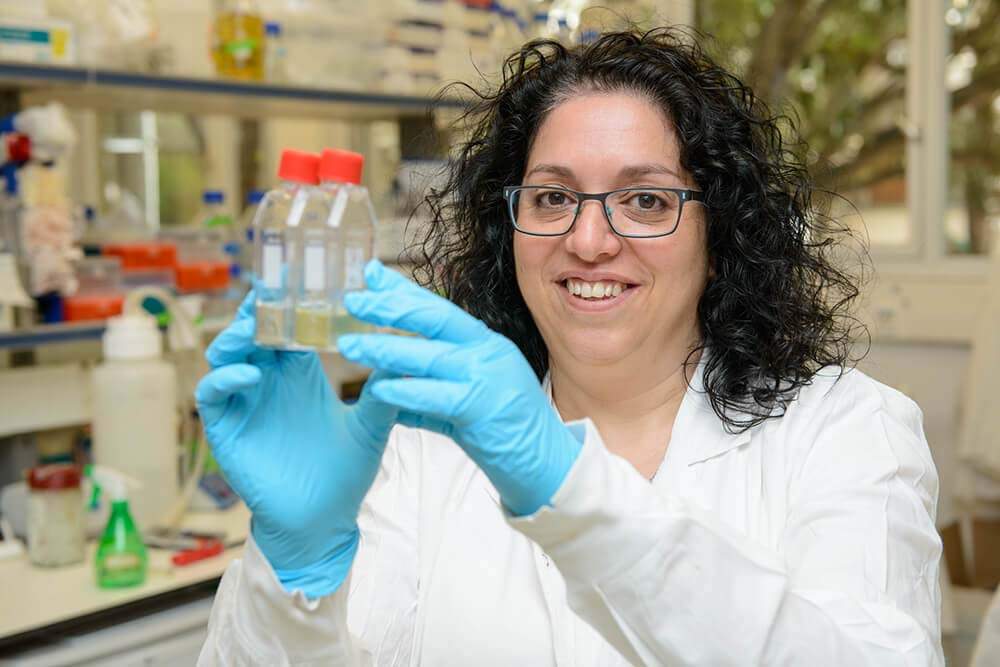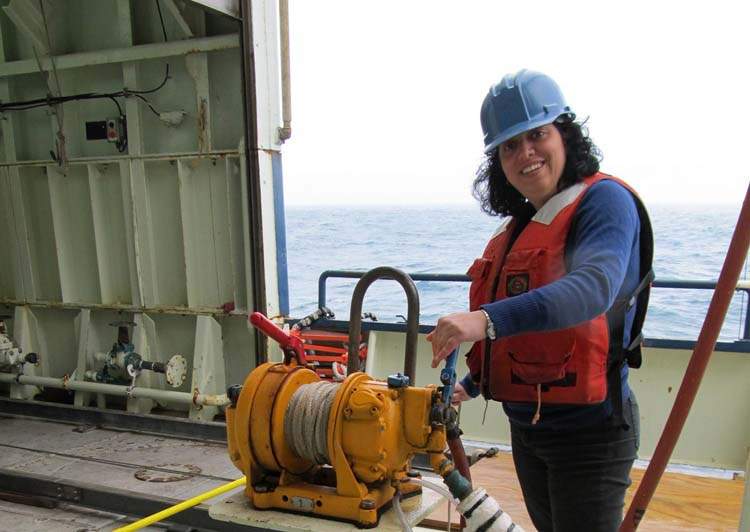Are you a journalist? Please sign up here for our press releases
Subscribe to our monthly newsletter:

They make up less than one percent of the biomass of the planet, yet they fix around half of its carbon dioxide and produce about half of its oxygen. They are the basis of the marine food chain, so the ocean’s life cannot exist without them. They are the source of ancient chalk deposits on land, and they release a sulfur compound into the atmosphere that provides the “seeds” around which cloud droplets condense, so they have a vital effect on the global climate. We’re talking, of course, about phytoplankton – single-celled, water-living microorganisms that, despite their tiny size, are crucial for life on our planet.
Dr. Daniella Schatz researches Emiliania huxleyi, a phytoplankton of the coccolithophore family, a long name that means it surrounds itself with a calcium carbonate shell. Emiliania huxleyi is one of the phytoplankton responsible for giant algal blooms – so large they can be tracked from space – that rapidly spread and then disappear just as quickly. Research in the lab where Schatz works – that of Dr. Assaf Vardi in the Weizmann Institute of Science’s Plant and Environmental Sciences Department – has conclusively shown that a bloom’s demise is due to infection with a virus called EhV that is specific to Emiliania huxleyi. EhV is a large virus, with genes for some 500 proteins, all wrapped in a double membrane. Vardi, Schatz and others in the group have identified genes for metabolic pathways never before been seen in a virus, which raised a question: How does the process of infection work for this virus?
Schatz and Vardi – together with group members Adva Shemi and Dr. Shilo Rosenwasser, Ilana Sabanai and Dr. Sharon Wolf of the Electron Microscopy Unit, and Dr. Shifra Ben-Dor of the Bioinformatics Unit – succeeded in unraveling part of the mystery. The results of their research, which recently appeared in New Phytologist, show that infected cells initiate a process known as autophagy, or “self-eating,” in which they cannibalize parts of themselves in an attempt to cope with the situation. They create new organelles called autophagosomes – double-walled vesicles within the cell that engulf unwanted stuff meant for digesting – including, among other things, the viral invaders.
Why, if the cells resort to the extreme act of autophagy, is the infection not halted? The researchers’ answer was a bit surprising: They showed that not only does autophagy not slow the spread of the virus, it aids and abets it. When autophagy was delayed in the phytoplankton cells, the number of new viruses dropped by some 70%. The virus, it seems, has learned to take advantage of the cells’ defensive tactics, stealing the material of the double membrane erected around the autophagosome to build membranes for new viruses.
Schatz says she is fascinated by this evolutionary arms race – one that begins with a single cell and a virus but whose effects extend to the entire planet. At present, she is investigating the communication between cells that takes place through extracellular vesicles, trying to understand how this fits in with the unique host cell-virus relationship.
